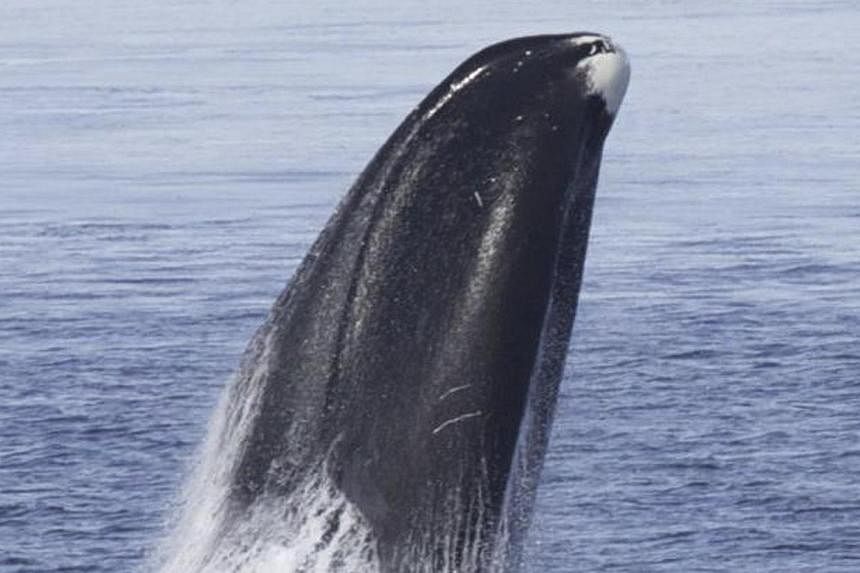WASHINGTON (REUTERS) - To learn the secret behind aging gracefully, you may want to check out the bowhead whale, the majestic denizen of the Arctic waters that boasts a lifespan topping 200 years.
Scientists on Monday unveiled the genetic blueprint for the bowhead whale, a genome chock full of clues behind this creature's exceptional longevity and remarkable disease resistance.
Comparing its genome to other mammals, the scientists discovered differences in the whale's genes related to DNA repair, cell cycle, cancer and the aging process that may help explain its lifespan and vitality.
"This is the biggest animal whose genome has been sequenced thus far and the first big whale to be sequenced," said University of Liverpool geneticist João Pedro de Magalhães, who led the study published in the scientific journal Cell Reports.
"By identifying novel maintenance and repair mechanisms, we hope to learn what is the secret for living longer, healthier lives and may be able apply this knowledge to improve human health and preserve human life," Dr Magalhães added.
Bowhead whales, which live longer than any other mammal, are among Earth's largest creatures. They reach up to 18 metres and are the second heaviest whale after the blue whale. They are mostly black, with the front part of their upturned lower jaw white.
Bowhead whales are filter feeders that eat huge amounts of zooplankton.
"Bowhead whales weigh between 50 and 100 tonnes when fully grown and have probably 1,000 times as many cells as humans, but they apparently have a anti-tumour response at the cell level that is far more efficient than what is found in humans," said biologist Mads Peter Heide-Jørgensen of the Greenland Institute of Natural Resources and the University of Copenhagen.
The scientists said the bowhead whale's genome may also help explain physiological adaptations related to size.
Dr Magalhães said whale cells must have a much lower metabolic rate than those of smaller mammals. He said the genome study detected changes in one specific gene involved in the body's temperature regulation that may be related to metabolic differences in whale cells.
The bowhead whale genome is slightly smaller than the human genome and the typical mammalian genome.
"Generally speaking, more complex species tend to have larger genomes with more genes, but I don't think within mammals there is a correlation between body size and genome size," Dr Magalhães said.

